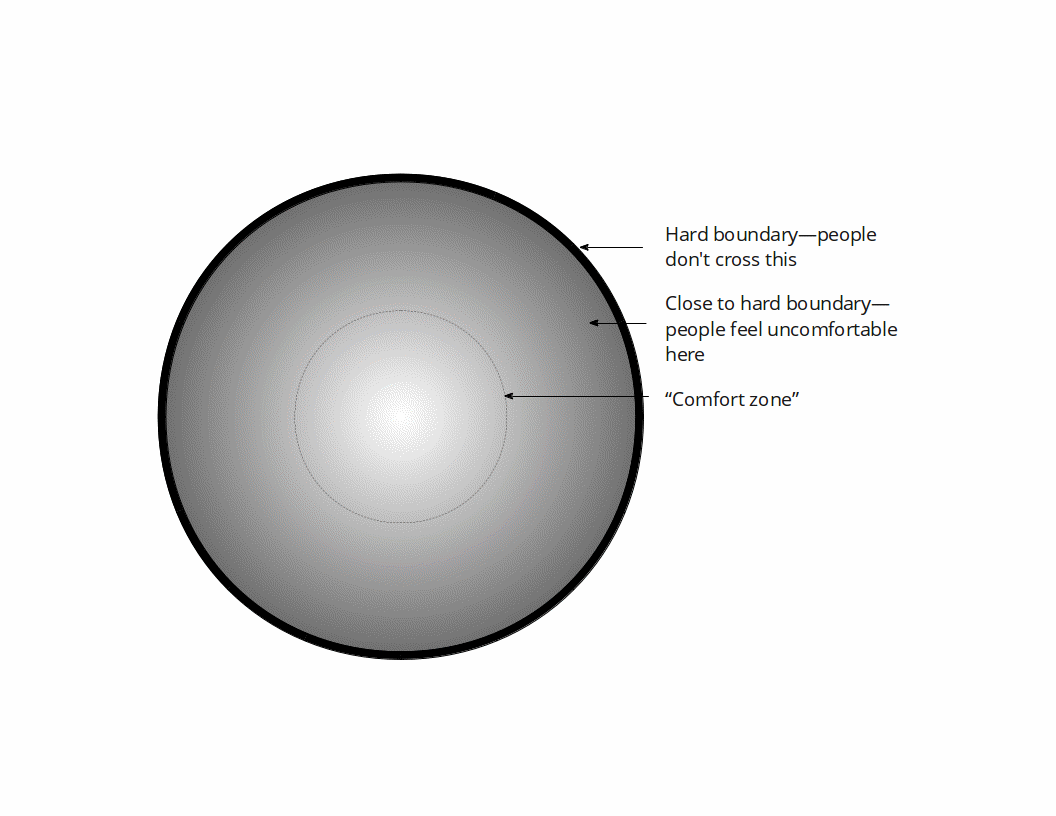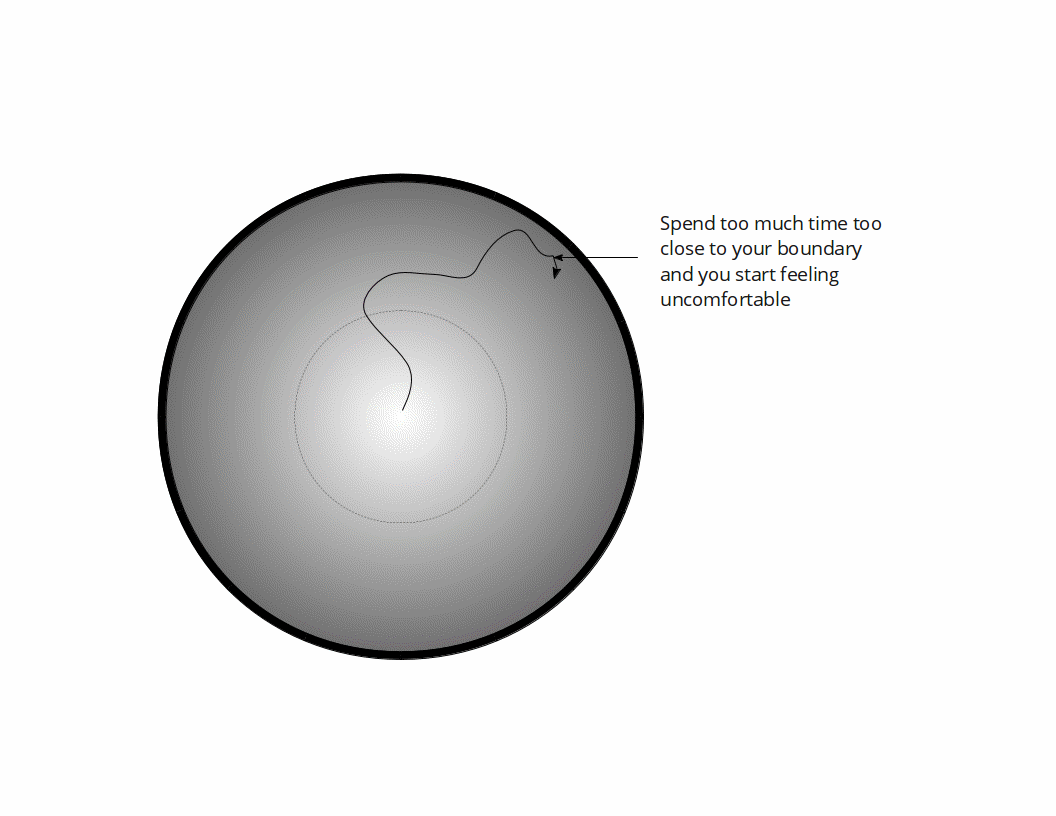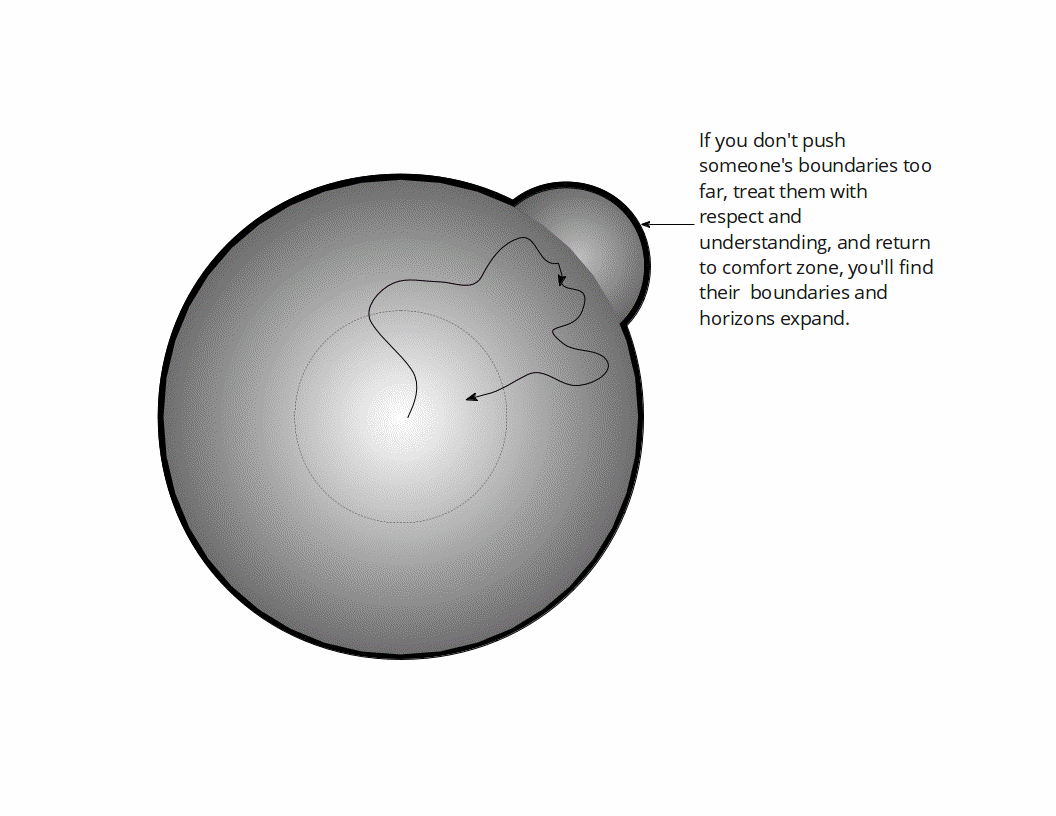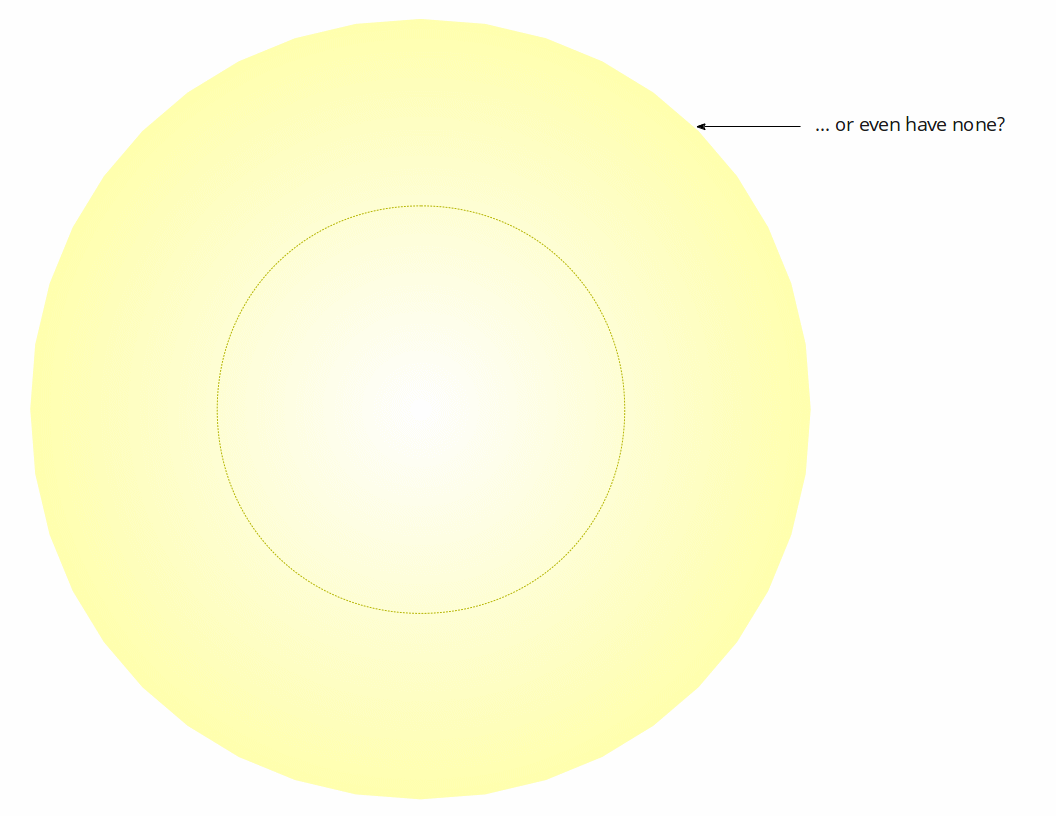Exploring and expanding your boundaries and horizons creates freedom and comfort in your life. Doing so can be challenging—“getting out of your comfort zone,” as many put it—but creates results and emotional reward. The more experience you have in it, the more you can lead others to do the same, creating freedom and comfort in their lives. I’ll illustrate the process with some simple diagrams. I find visualizing would-be complex things simplifies them and makes them easier to do.
First, consider a diagram of the things you do, as illustrated below. As I’ve illustrated it, the light-colored center is where things are easier—that is, the center of your comfort zone, bounded by the dashed line. I colored it darker farther from the center, indicating that activities out there get harder. At the outside border is a thick black line, illustrating that people don’t cross their hard boundaries.
The person doing the activities bounded in this region could be yourself or someone you lead.

Below illustrates you or someone else doing things. Most people spend most of their time near the center doing comfortable things. Rarely do most of us exit our comfort zones, then usually for short times, returning to comfort soon after.

As illustrated below, sometimes we leave what’s comfortable for a while and get close to our hard boundaries. Doing so makes us uncomfortable.

If we test our limits but then return to our comfort zones, we may find the next time we approach that limit, we’re more comfortable there. As illustrated below, that means we expanded our hard boundaries. If we lead someone else to explore their boundaries, treating them respectfully, and allowing them to return to where they feel comfortable, the same thing happens to them—their boundaries expand.

After a while, expanding enough local boundaries causes your overall boundaries to expand. As illustrated below, your boundaries eventually expand everywhere. The yellow boundary shows a later boundary of someone who has challenged their boundaries enough. In principle if you never expand your boundaries, your overall boundaries could shrink over time. When your overall boundaries enlarge, your comfort zone will also increase, as shown below.

When your overall boundaries and comfort zone increase, more things you do become comfortable, including things that used to make you uncomfortable. You feel more free and confident to do things you couldn’t before.

With expanded boundaries and horizons, your life has more freedom, expectation of success, and motivation. It has less fear and insecurity.

Your boundaries can increase more as you overcome more challenges. The path in the diagram below is the same path from a diagram above. There it nearly reached a hard boundary. Here it doesn’t even leave your comfort zone. To be able to do more things in life freely and comfortably, especially activities that used to make you uncomfortably, is a better life by any measure I can think of.

I find that the more you expand your boundaries and horizons, the less hard your hard boundaries become. For example, if you travel a lot or sample many kinds of cuisine, you feel more open to visit new places or try new foods.

With experience, you might wonder how much you can yourself able to do or, in other words, how free and comfortable you can find yourself trying new things.


I read your post about boundary expansion model. What you said in the model is true with me. During the life I have lived, it seems whenever I did something I though I couldn’t do, I felt more secure and more at ease with life afterwards. Given that I have been through a number of things that I thought I was unable to go through, I now basically feel like there is a very limited number of things that I cann’t do.
Actually your model is very similar to the one or part of the one my adviser talked to me about years ago when I was working on my Master degree, which is something about education. The difference between your model and hers is that her circle has a hard core, which represents the things a subject will never do. According to her, everybody has a hard core, whose composition is partially personal choice and partially social and cultural heritage. She likens the hard core to the North Star of life——if people live with it they will get what you want at the end of the day though keeping it may come at a price.
Your explanation of the model is much more vivid thanks to the graphic illustration.
I like illustrating these models so I’m glad it helped for you. I find illustrations help clarify my thoughts and clarifying my thoughts help me choose beliefs and behaviors that improve my life. I hope the illustrations work that way for you. I don’t suggest people have to adopt my models. I also like hearing and seeing different ones than mine to help broaden my horizons and get new perspectives.
Pingback: How The Escort Experience Expands Your Boundaries | Premiere London escorts